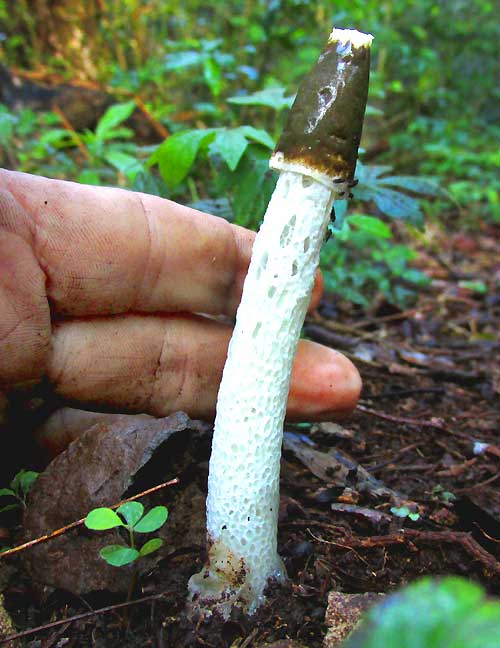Excerpts from Jim Conrad's
Naturalist Newsletter
Entry issued on November 15, 2019, from the forest just west of Tepakán; elev. ~9m (~30 ft), N21.053°, W89.052°; north-central Yucatán state, MÉXICO
STINKHORN
Along a new trail through the rancho's forest, one morning after an overnight rain, during a period when it was raining every day, the fungus shown below appeared.

It must have come up overnight because I don't think I'd have missed it the previous day. It looks like PHALLUS RAVENELII, though that's mostly an eastern North America species, though a few spottings have been reported in Mexico. Several species of the genus Phallus exist, so possibly this is a look-alike species. Fungi haven't been much studied in the Yucatan.
The stinkhorn's cap is covered with a brown, sticky goo, called gleba, smelling a bit like carrion. Small insects land on it, the goo contains reproductive spores, and when the insects fly off, spores go with them in the goo stuck to the insects' feet. A close-up of the cap is shown below:

Ecologically, the species is associated with rotting wood. It may also form mycorrhizal associations with certain trees. Though stinkhorns aren't toxic, hardly anyone tries to eat them, though immature bodies without the goo sometimes are eaten.
This species in North America is described as growing in lawns, gardens, and cultivated areas, though it also grows in woods. Like other stinkhorn species, it develops from an underground "egg."